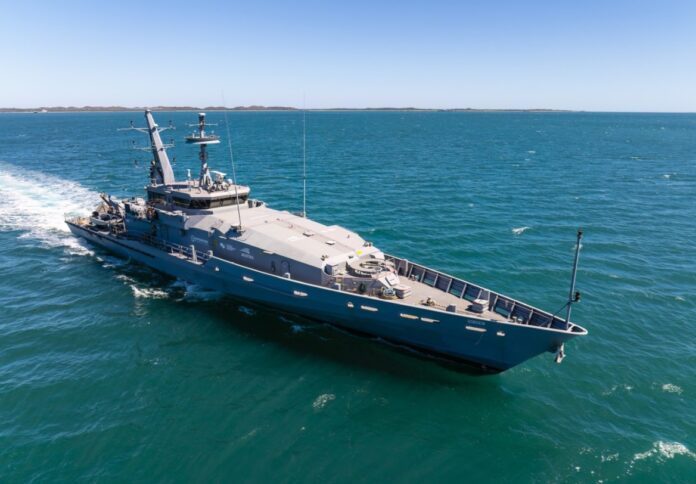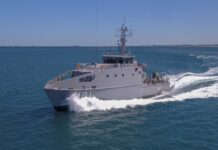
The collaborative effort known as the Patrol Boat Autonomy Trial (PBAT) project has achieved success in completing Sea Acceptance Trials, including Endurance Trials, for the remotely and autonomously operated vessel, Sentinel.
Conducted by Austal Australia, the trials comprised a series of remote and autonomous navigation exercises held off the coast of Western Australia throughout March and April 2024.
These trials employed Greenroom Robotics’ Advanced Maritime Autonomy (GAMA) Software to navigate the de-commissioned Armidale-class Patrol Boat.
Throughout the testing phase, a select team from the project, along with observers and crew members from International Maritime Services (IMS), were present onboard to ensure prompt responses to any unforeseen circumstances or the need for manual intervention.
Funded by the Commonwealth of Australia, PBAT is a collaborative initiative involving Austal Australia, Greenroom Robotics, Trusted Autonomous Systems, and the Royal Australian Navy Warfare Innovation Navy (WIN) Branch.
Its objective is to integrate robotic, automated, and autonomous elements onto a former Navy patrol boat, providing a proof-of-concept demonstrator for optionally crewed or autonomous operations.
Additionally, the trial has explored the legal and regulatory requirements associated with operating an autonomous vessel.
In 2022, Austal Australia acquired the decommissioned HMAS Maitland from the Commonwealth of Australia, subsequently renamed as ‘Sentinel’, and commenced preparations for the Patrol Boat Autonomy Trial (PBAT).
At 57 metres LOA, Sentinel holds the distinction of being the largest vessel in Australia to be operated remotely and autonomously.
Extensive modifications were made to Sentinel to enable remote and autonomous operations, including enhancements to navigation, communications, bilges, CCTV, and electrical systems.
Greenroom Robotics installed sensors and computer units to facilitate the Autonomous Control System, GAMA.
Paddy Gregg, CEO of Austal Limited, lauded the completion of sea trials as a significant achievement in the PBAT project, demonstrating the capability of locally developed autonomous systems and their integration within a full-sized, Australian-made naval vessel.
“Looking ahead, we are excited about the potential opportunities to work with Navy to further advance the autonomous technology demonstrated during the trial; on projects such as the Large Optionally Crewed Surface Vessels (LOSV), recently announced by the Australian Government as part of the Surface Combatant Fleet Review,” Gregg remarked.
Harry Hubbert, chief technology officer at Greenroom Robotics, praised the success of PBAT as a collaborative effort that sets the stage for future maritime advancements.
He stressed, “This collaborative effort not only has the potential to enhance current operations and platforms but also paves the way for unprecedented advancements on the horizon.”
Commodore Michael Turner, Navy’s Director General Warfare Innovation Navy, praised PBAT not only for its demonstration of autonomous technology but also for the collaborative spirit that contributed to its success.

















